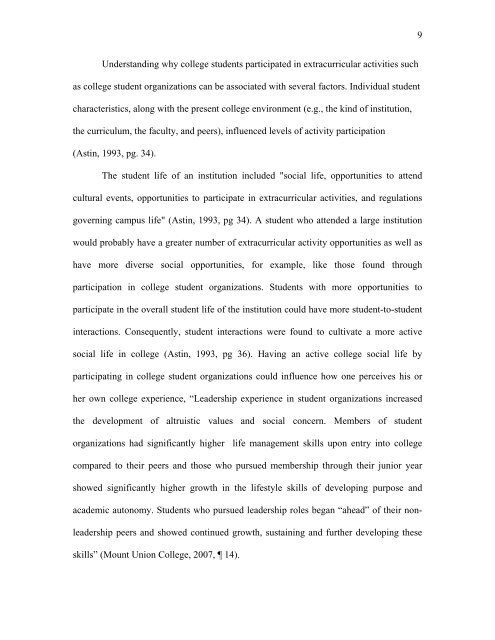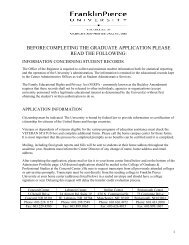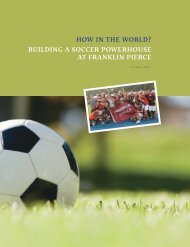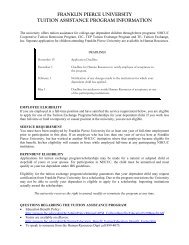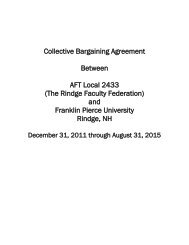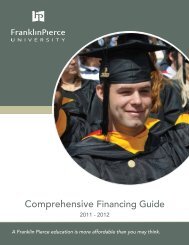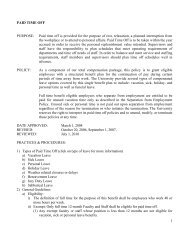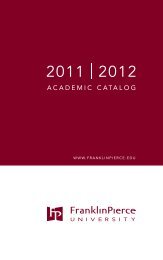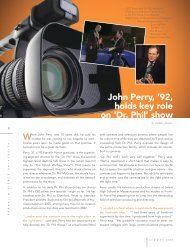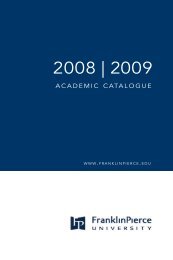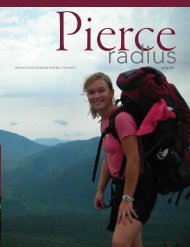Student Organization Involvement Study (PDF) - eRaven - Franklin ...
Student Organization Involvement Study (PDF) - eRaven - Franklin ...
Student Organization Involvement Study (PDF) - eRaven - Franklin ...
You also want an ePaper? Increase the reach of your titles
YUMPU automatically turns print PDFs into web optimized ePapers that Google loves.
9Understanding why college students participated in extracurricular activities suchas college student organizations can be associated with several factors. Individual studentcharacteristics, along with the present college environment (e.g., the kind of institution,the curriculum, the faculty, and peers), influenced levels of activity participation(Astin, 1993, pg. 34).The student life of an institution included "social life, opportunities to attendcultural events, opportunities to participate in extracurricular activities, and regulationsgoverning campus life" (Astin, 1993, pg 34). A student who attended a large institutionwould probably have a greater number of extracurricular activity opportunities as well ashave more diverse social opportunities, for example, like those found throughparticipation in college student organizations. <strong>Student</strong>s with more opportunities toparticipate in the overall student life of the institution could have more student-to-studentinteractions. Consequently, student interactions were found to cultivate a more activesocial life in college (Astin, 1993, pg 36). Having an active college social life byparticipating in college student organizations could influence how one perceives his orher own college experience, “Leadership experience in student organizations increasedthe development of altruistic values and social concern. Members of studentorganizations had significantly higher life management skills upon entry into collegecompared to their peers and those who pursued membership through their junior yearshowed significantly higher growth in the lifestyle skills of developing purpose andacademic autonomy. <strong>Student</strong>s who pursued leadership roles began “ahead” of their nonleadershippeers and showed continued growth, sustaining and further developing theseskills” (Mount Union College, 2007, 14).


